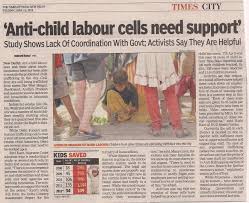Child labour was employed to varying extents through most of history. Before 1940, numerous children aged 5–14 worked in Europe, the United States and various colonies of European powers. These children worked in agriculture, home-based assembly operations, factories, mining and in services such as newsies. Some worked night shifts lasting 12 hours. With the rise of household income, availability of schools and passage of child labour laws, the incidence rates of child labour fell.[9][10][11]
What is Child Labor?
Child labor is work that harms children or keeps them from attending school. Around the world and in the U. S., growing gaps between rich and poor in recent decades have forced millions of young children out of school and into work. The International Labor Organization estimates that 215 million children between the ages of 5 and 17 currently work under conditions that are considered illegal, hazardous, or extremely exploitative. Underage children work at all sorts of jobs around the world, usually because they and their families are extremely poor. Large numbers of children work in commercial agriculture, fishing, manufacturing, mining, and domestic service. Some children work in illicit activities like the drug trade and prostitution or other traumatic activities such as serving as soldiers.
Where does most child labor occur?
Of an estimated 215 child laborers around the globe: approximately 114 million (53%) are in Asia and the Pacific; 14 million (7%) live in Latin America; and 65 million (30%) live in sub-Saharan Africa.
The worst forms of child labour
Whilst child labour takes many different forms, a priority is to eliminate without delay the worst forms of child labour as defined by Article 3 of ILO Convention No. 182:
(a) all forms of slavery or practices similar to slavery, such as the sale and trafficking of children, debt bondage and serfdom and forced or compulsory labour, including forced or compulsory recruitment of children for use in armed conflict;
 (b) the use, procuring or offering of a child for prostitution, for the production of pornography or for pornographic performances;
(b) the use, procuring or offering of a child for prostitution, for the production of pornography or for pornographic performances;
(c) the use, procuring or offering of a child for illicit activities, in particular for the production and trafficking of drugs as defined in the relevant international treaties;
(d) work which, by its nature or the circumstances in which it is carried out, is likely to harm the health, safety or morals of children.
(c) the use, procuring or offering of a child for illicit activities, in particular for the production and trafficking of drugs as defined in the relevant international treaties;
(d) work which, by its nature or the circumstances in which it is carried out, is likely to harm the health, safety or morals of children.
Labour that jeopardises the physical, mental or moral well-being of a child, either because of its nature or because of the conditions in which it is carried out, is known as “hazardous work”.